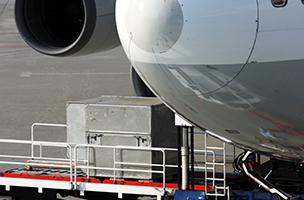
IATA: global air freight up 6.8% in February 2018 YoY
Geneva, Switzerland, 2018-Apr-06 — /Travel PR News/ — The International Air Transport Association (IATA) released demand growth results for global air freight markets for February 2018 showing a 6.8% increase in demand measured in freight tonne kilometers (FTKs) compared to the same period last year. Adjusting for the potential Lunar New Year distortions by combining growth in January 2018 and February 2018, demand increased by 7.7%. This was the strongest start to a year since 2015.
Freight capacity, measured in available freight tonne kilometers (AFTKs), grew by 5.6% year-on-year in February 2018. Demand growth outstripped capacity growth for the 19th month in a row which is positive for airline yields and the industry’s financial performance.
The continued growth in air cargo demand is consistent with ongoing robust global trade flows. There are, however, signs that the best of the upturn for air freight has passed. Demand drivers for air cargo are moving away from the highly supportive levels seen last year. In recent months the Purchasing Managers Index (PMI) for manufacturing and export orders has softened in a number of key exporting nations including Germany, China and the US. And the seasonally adjusted demand for air cargo which rose at a double-digit annualized rate for much of 2017 is now trending at 3%.
“Demand for air cargo continues to be strong with 6.8% growth in February. The positive outlook for the rest of 2018, however, faces some potentially strong headwinds, including escalation of protectionist measures into a full-blown trade war. Prosperity grows when borders are open to people and to trade, and we are all held back when they are not,” said Alexandre de Juniac, IATA’s Director General and CEO.
Regional Performance
All regions reported an increase in demand in February 2018.
Asia-Pacific airlines saw demand in freight volumes grow 6.5% in February 2018 and capacity increase by 7.2%, compared to the same period in 2017. The upward-trend in seasonally-adjusted volumes has returned, with volumes currently trending upwards at an annualized pace of between 6.0% and 7.0%. As the largest freight-flying region, carrying close to 37% of global air freight, the risks from protectionist measures impacting the region are disproportionately high.
North American airlines’ freight volumes expanded 7.3% in February 2018 compared to the same period a year earlier, and capacity increased by 4.1%. Seasonally-adjusted volumes are broadly trending sideways. The weakening of the US dollar over the past year has helped boost demand for air exports. Data from the US Census Bureau shows a 10.2% year-on-year increase in air export volumes from the US in January 2018, compared to a slower rise in imports of 6.7%.
European airlines posted a 5.7% increase in freight volumes in February 2018. This was almost half the rate of the previous month and the slowest of all regions. Capacity increased 3.8%. Seasonally-adjusted volumes have been volatile in 2018 with the jump in demand in January largely reversed in month-on-month terms in February. The strength of the Euro and the risks from protectionist measures may impact the European freight market which has benefitted from strong export orders, particularly in Germany, in recent years.
Middle Eastern carriers’ year-on-year freight volumes increased 7.4% in February 2018 and capacity increased 7.6%. Seasonally adjusted freight volumes continue to trend upwards however they have slowed to an annualized rate of 4% since late 2017. This largely reflects the weak conditions on the routes to and from Europe which have seen demand trend downwards at a double-digit rate over the past five months.
Latin American airlines experienced growth in demand of 8.7% in February 2018 and a capacity increase of 6.9%. The pick-up in demand over the last 18 months comes alongside signs of economic recovery in the region’s largest economy, Brazil. Seasonally-adjusted international freight volumes are now back to the levels seen at the end of 2014.
African carriers’ saw freight demand increase by 15.9% in February 2018 compared to the same month last year – the largest increase of any region. Capacity increased by 3.9%. The increase was helped by very strong growth on the trade lanes to and from Asia driven by ongoing foreign investment flows into Africa. While the surge in demand on the route looks to have stabilized, volumes still increased by nearly 24% in year-on-year terms in January.
View full results in our February freight analysis (pdf)
For more information, please contact:
Corporate Communications
Tel: +41 22 770 2967
Email: corpcomms@iata.org
Notes for Editors:
- IATA (International Air Transport Association) represents some 265 airlines comprising 83% of global air traffic.
- You can follow us at http://twitter.com/iata2press for news specially catered for the media.
- Explanation of measurement terms:
- FTK: freight tonne kilometers measures actual freight traffic
- AFTK: available freight tonne kilometers measures available total freight capacity
- FLF: freight load factor is % of AFTKs used
- IATA statistics cover international and domestic scheduled air freight for IATA member and non-member airlines.
- Total freight traffic market shares by region of carriers in terms of FTK are: Asia-Pacific 36.9%, Europe 24.2%, North America 20.6%, Middle East 13.7%, Latin America 2.7%, Africa 1.9%.
SOURCE: International Air Transport Association (IATA)

